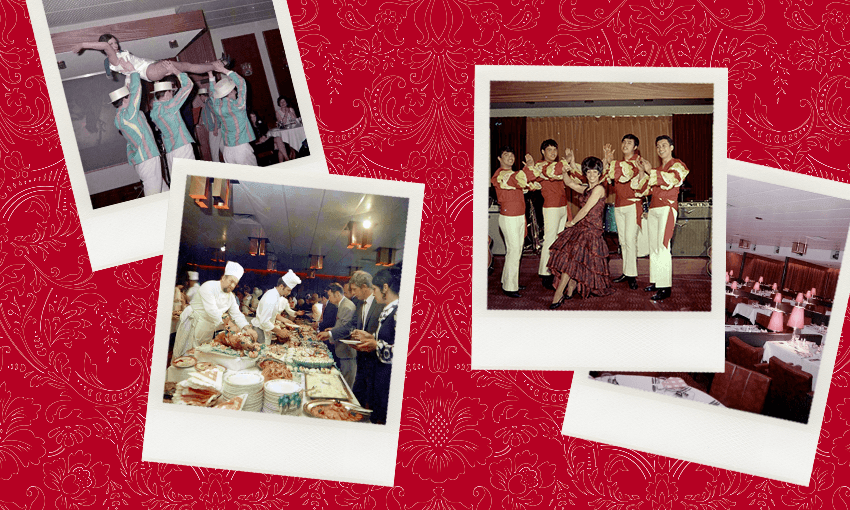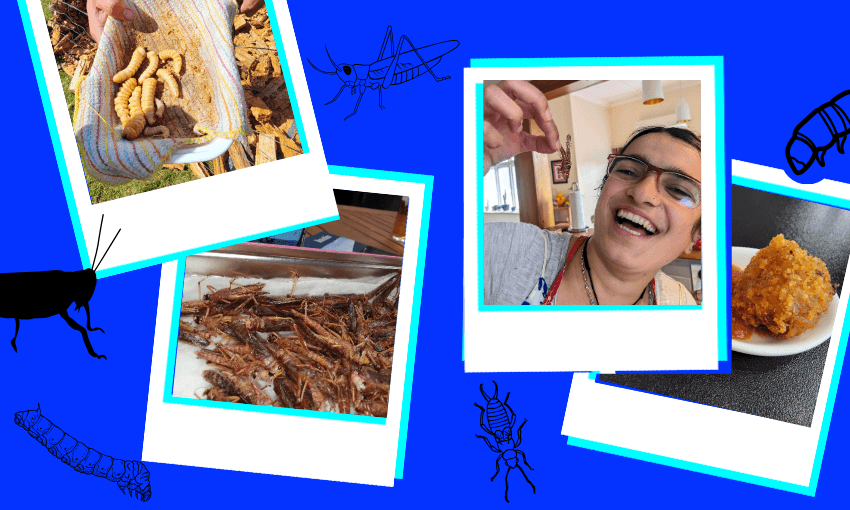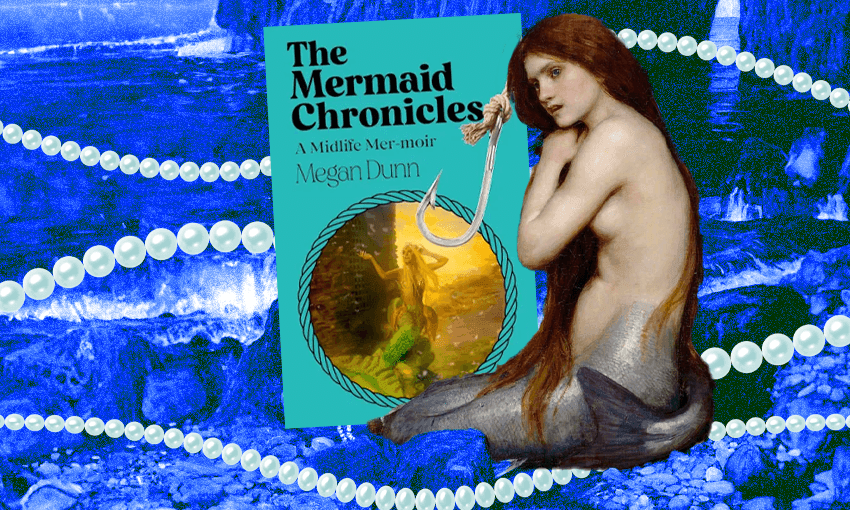More than 50 years ago, Auckland’s Logan Park Hotel offered a dining experience unlike anything seen before in the city – or since, for that matter. Tāmaki Paenga Hira Auckland Museum curator Nina Finigan takes a journey through the archives.
I don’t know about you, but I’ve never had the pleasure of being serenaded by smooth jazz or entertained by dancers doing high kicks while I tuck into a plate of crayfish mornay. Would I like to experience this? Yes, yes I would. If I could only take a time machine back to 1960s Tāmaki Makaurau then my wish could be fulfilled.
My highly specific interest in (what I imagined to be) sequinned bodies shimmying around diners polishing off chicken Maryland – a dish of fried chicken topped with gravy and garnished with bananas – was piqued as I looked through the menus in the ephemera collection held by Tāmaki Paenga Hira Auckland Museum. Ephemera as in ephemeral: things that are not necessarily made to last, things that you might pick up and discard again without much thought. Things like flyers, programmes, packaging and posters.
Despite the odds of survival being stacked against it, ephemera is a vital part of our cultural memory and is a cherished collection at our city’s museum. Without trying very hard, ephemera reveals much about time, place, style and design. And a menu? A menu is a goldmine, revealing changing tastes and trends, chronicling restaurants and establishments that have come and gone – a thumbprint of a moment in time.
This is the unassuming menu that grabbed my attention:
The moment in time is 1966. The place is the Logan Park Motor Hotel, Greenlane, Auckland.
The Logan Park Motor Hotel opened its midcentury modern doors in October 1966. The building was designed by a young Ron Sang in his first job after graduating, and he would go on to become one of this country’s most celebrated architects. The plush new hotel complex consisted of 128 bedrooms and a heated swimming pool with underwater music (!!!).
But most importantly, it had two à la carte restaurants, a banquet reception room, nightly dancing, a floor show (entertainment presented on the floor rather than the stage), and a live band six nights a week.
When it opened, Logan Park was at the forefront of a new kind of dining experience. Both the dining room and bar exuded sophistication: plush red velvet curtains; lamps on every table emanating a soft, boudoir-type crimson glow, pink anodised aluminium modernist chandeliers protruding from the ceiling and waistcoated staff all indicated that you were in for a classy night out.
This was all happening at a time of profound change. The 1960s had ushered in a new era of liberal attitudes toward alcohol in New Zealand. This began in 1961, when new laws allowed a limited number of licensed restaurants and stepped into hyperdrive in 1967 when restricted closing times were abolished and the 6 o’clock swill was finally put to rest. Logan Park was at the forefront as “one of the early restaurants to offer dinner and a show, with alcohol available with your meal”.
Along with expanding how many hours one could legally drink, New Zealanders were also expanding their taste buds. By the time Logan Park opened, this change had been on the boil for some time. With the arrival of refugees and migrants from a war-torn Europe came new cuisines and ways of dining. Dutch-born Otto Groen was one such food revolutionary (who coincidentally was a driving force behind the liquor law changes).
In 1953, not even a year after arriving in New Zealand, Otto opened Hi Diddle Griddle at 507 (Food from Heaven) Karangahape Road. Not just a place to refuel and go, Hi Diddle Griddle was a multifaceted dining experience. As well as offering snazzy food like lobsters, charcoaled broiled steaks and chicken in a basket, they also entertained diners with live music. Dinner and a show had made its debut, and for the next 20 years New Zealanders couldn’t get enough. This was the legacy that the Logan Park Hotel inherited when it opened its doors in 1966.
‘Things really happen at Logan Park’
So proclaims an article in the Press from December 1966. So let’s have a look at what exactly was going on.
With a sophisticated design and state-of-the-art mod cons, the culinary offerings at Logan Park had to be top of the range. Lucky for them they managed to snag one of the “doyens” of the Auckland restaurant business to curate their menu: Mr Robert Sell.
Like Otto Groen, Bob (as he was known) Sell had come to Aotearoa from Europe in the early 1950s. Not long after arriving he took over La Boheme, a Wellesley St coffee and pancake shop that Sell turned into one of Auckland’s most elegant restaurants. In 1957 he opened The Colony, a nightclub that “only ran on a Saturday and comprised four acts, a live band and a four-course meal”, and showcased legendary performers like the Howard Morrison Quartet and a young Kiri Te Kanawa. Clearly Sell was out to change the dining scene – having him on board at Logan Park must have been quite the coup.
So what kind of dining was cultivated among the plush velvet? Going by the menu, this was a place where diners could exercise a bit of worldly sophistication. One might start the night off with an appetiser of poisson cru tahitienne (marinated raw fish); perhaps chicken indienne for the main event (consistent ingredients seem to be mango chutney, curry powder and almonds, based on Google searches); before topping the night off with a banana Rio de Janeiro (perhaps caramelised banana? I can’t find evidence of this).
Unfortunately I can’t find images of the à la carte delights, but let’s just pause here to appreciate their seriously impressive buffet arrangements:
Stunning.
The menu didn’t just zip all over the culinary world – some of the delicacies on offer were closer to home. One of particular note is cream of toheroa, a soup that was eaten with almost fanatical enthusiasm throughout the 20th century. Toheroa – a shellfish once found in abundance across the motu, but particularly on the west coast of the North Island – was a part of the staple diet, and a taonga for Māori for hundreds of years. Its international popularity soared after the Prince of Wales (later King Edward VIII) sampled the green-hued soup on a 1921 visit to Aotearoa. According to reports, “like Oliver Twist he asked for more”, and even signed his menu card and wrote “Excellent!” beside the soup.
With this rapturous seal of approval, the soup was soon being canned and shipped abroad – even served in fine restaurants as far afield as London. Fit for a king and, over 40 years later, for punters at the Logan Park Motor Hotel.
But toheroa wasn’t to be on the literal and proverbial menu for much longer. Its eventual disappearance reflects a common story: over-harvesting (both commercial and recreational) of this once abundant shellfish meant it was collected almost to extinction.
Commercial harvesting was finally banned in the 1970s, and now only Māori exercising customary rights can legally harvest toheroa. Despite these efforts, the population has so far failed to recover. (For a much more thorough exploration of the story of the toheroa, see my colleague Robert Vennel’s article When toheroa soup went global.)
So, now you’ve got your ethically dubious bowl of soup, what about the entertainment?
Logan Park was a “new concept in New Zealand entertainment” with “a floor show with a regular band and visiting singers”. When the doors opened in 1966, the band in residence was led by Australian saxophonist Jimmie Sloggett who had arrived in Auckland via Sydney at the age of 23 with his new wife, New Zealand singer Carol Davies.
Although the saxophone was about to be usurped by the electric guitar and rock and roll, at the time it was the centrepiece of live performance. Before long Jimmie “The Saxman” Sloggett was in demand on the local gig circuit, playing at venues around central Auckland. By 1966, he was playing six nights a week with his band at Logan Park. Jimmie’s influence on music in Aotearoa went far beyond Logan Park though – his many ventures included being a local record producer, working with Radio Hauraki when it was still broadcast from the “pirate” ship Tiri in the Hauraki Gulf, and recording a jingle for Choysa tea (which I would love to find).
Jimmie Sloggett and his band weren’t going it alone on their nights at Logan Park though. While diners tucked into their carpetbag steak (steak stuffed with oysters), they were also treated to a dance show.
Though perhaps the big jazz band and ballroom set up was beginning to look a bit old-fashioned next to the cool new rock and roll scene developing around the city, floor shows were still going strong in the 1960s. A review of Auckland’s hot night spots in 1960 revealed that there were “over 20 night clubs in the city and many of them feature floor shows”. In venues like the Sapphire Room, the Picasso Room and The Arabian, punters out for a good night were entertained by a smorgasbord of performers from comedians to dancers and singers. The Arabian even boasted a bona fide chorus line as well as a dancer called Levita who performed a “scantily dressed, sinuous dance” and “showed what interesting uses there are for exotica-type music”.
Nothing so racy at Logan Park, but I am happy to report that there were sequins, and feathered hats and shiny fabric aplenty. I can’t find any written accounts of these performances, so we’ll just have to glean what we can from photographs:
It’s anyone’s guess (unless someone reading this remembers these performances!) but one can assume the numbers were wholesome, humorous and catchy. Whatever they consisted of, they were certainly intimate – the proximity of dancers to diners looks suspiciously ripe for audience participation.
Though Jimmie Sloggett was certainly a drawcard, he wasn’t the only reason that Logan Park is on the map as an important venue in Tāmaki’s music history. By October 1967 the resident band was the Tikiwis – a showband featuring Winiata Watene, Paul Watene, Philip Rivers, David Rivers and the Australian singer Helene Johnston.
Just look at these sartorial stunners. The Tikiwis were part of the golden era of Māori showbands and like many others their success went far beyond Aotearoa’s shores.
Curtains for Logan Park
The Ryman Logan Campbell Retirement Village now occupies the hotel’s site. Gone are the velvet curtains, saxophones and sequins. And many of the offerings on that carefully curated menu are now relics themselves, indicative of a moment in our dining history, casualties of ever-changing trends, palates and circumstances.
Dinner and a show as it was at Logan Park may have faded somewhat from our social calendars but it’s not entirely gone. Caluzzi Drag Cabaret on Karangahape Road has been doing dinner shows since 1996. The chicken topped with bananas might be missing, but when I walk past on a Friday or Saturday night I see no indication that the thirst for being entertained while dining has lessened since the glory days of the 60s. Long live dinner and a show.





















Discussion about this post